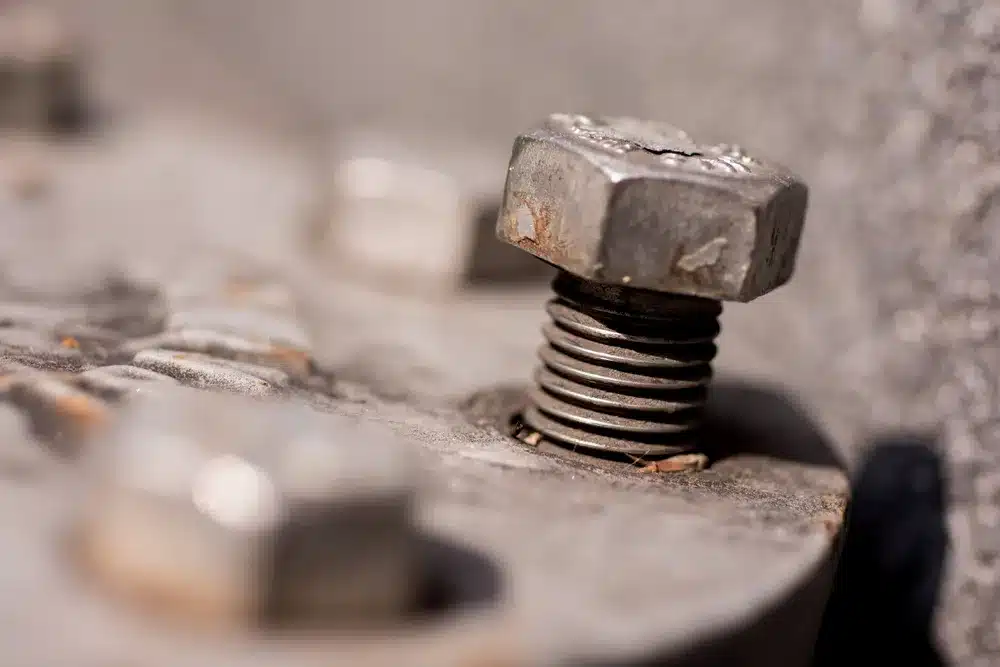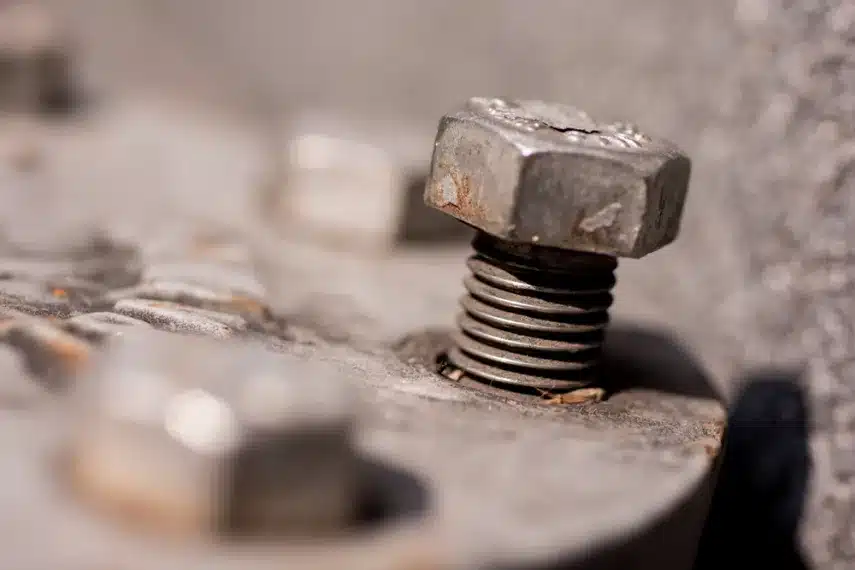Bolts may seem like small components in the grand scheme of machinery and structures, but their integrity is crucial. One common problem that engineers and maintenance professionals encounter is bolts loosening due to vibration. This issue can lead to safety hazards and equipment damage if left unaddressed.
This article explores why bolts loosen from vibration and provides four essential steps to prevent it.
Why Do Bolts Loosen From Vibration?
When securing heavy machinery and other industrial equipment, bolts can gradually come loose due to a number of dynamic forces at play. We’ll refrain from making you relive physics class entirely, but will cover a few important concepts:
- Oscillations and micro-movements: The gradual loosening of bolts primarily stems from oscillations and micro-movements that occur as heavy machinery or equipment operates. These forces cause the bolts to experience minute shifts in position over time. Picture this as a constant, subtle rocking motion – almost imperceptible on the surface, but over time, it can have significant consequences.
- Gradual relaxation of bolt tension: As the machinery vibrates, these micro-movements gradually relax the tension in the bolts. Bolts are initially tightened to a specified torque, creating a clamping force that holds the connected components together. However, the vibrations act as a persistent force working against this clamp, causing the bolt to lose its initial tension. This effect is often referred to as “creep.”
Sources of Vibration
Vibrations can originate from various sources, and understanding them is crucial to address the issue effectively. Some common ones are:
-
- Heavy machinery, such as crushers, construction equipment, manufacturing machines
- Engines, whether they be in vehicles or stationary power generators, etc.
- Rotating equipment, like pumps, fans, and turbines
- Vehicle motion
Consequences of Bolt Loosening
The repercussions of loose bolts extend far beyond mere inconvenience. In fact, they can be catastrophic.
- Equipment failures – Loose bolts can compromise the structural integrity of machinery or structures, leading to equipment failures. These failures not only result in costly repairs or replacements but can also pose a significant safety risk to workers and bystanders.
- Injuries – In some cases, loose bolts can result in equipment malfunction, causing accidents and injuries to personnel working in the vicinity.
- Expensive downtime – The financial implications of downtime caused by loose bolts are substantial. When a critical machine or infrastructure is out of commission due to a bolt-related issue, it can translate into lost productivity, missed deadlines, and costly maintenance efforts.
How to Stop Bolt Loosening: 4 Steps to Try
1. Ensure proper bolt selection and installation
Of course, the first and most crucial step in preventing bolt loosening is to select the right bolt. This involves paying attention to key factors like:
- Material and coating – Select the material and coating options that suit the specific environmental conditions and stresses your application will face.
- Grade – Bolt grades were established for this reason; to verify the amount of stress a particular bolt can withstand.
- Thread type – Threads that provide a secure fit, such as fine threads, are often preferred for applications prone to vibration.
2. Use a locking device
To add an extra layer of security, consider using a locking device in conjunction with your bolts. Some common options are lock washers, thread patches, and Place bolts —all with their own set of pros and cons.
Place bolts are the top locking mechanism for this use case. In fact, this is our top takeaway from this article. Place bolts are self-locking bolts that have special slotted hex heads, which are responsible for their self-locking capability. Place bolts can produce up to SEVEN times more vibration resistance than traditional hex head cap screws! If you haven’t tried one yet, we aren’t fibbing when we say it’ll be a game-changer.
Learn more about how Place bolts work in this article.
Lock washers are designed to provide resistance to vibration-induced loosening. They work by creating tension between the bolt head and the surface. While they are cost-effective and easy to install, their effectiveness may vary depending on the application, and they might not always prevent loosening entirely.
Thread patches are pre-applied materials that enhance the friction between the bolt and the threads. This significantly reduces the chances of loosening. They are particularly effective in applications with high vibration levels but may be costlier than other solutions. Also, most bolts with locking patches can’t be tightened and re-tightened without the patch wearing off.
3. Tighten to the specified torque
Properly torquing your bolts is essential for maintaining their integrity and preventing loosening. Always refer to the manufacturer’s specifications or engineering guidelines for the correct torque values. Run tests or use torque-tension equipment to verify that you’ve achieved the desired level of tension.
4. Conduct regular inspections and maintenance
Bolt performance doesn’t end with the initial installation. To ensure long-term security, implement regular inspection and maintenance procedures. Plan routine inspections to identify any loosened or damaged bolts, as early detection can prevent catastrophic failures.
When inspecting, if you find damaged or compromised bolts, don’t hesitate to replace them with new bolts from a trusted manufacturer. And remember, sometimes the cheapest option isn’t the best option — or even the cheapest option in the long run. If you find yourself constantly replacing damaged bolts, try investing in a higher-quality option to save you hassle and money.
Get High-Quality Place Bolts at Wilson-Garner
Looking for that higher-quality solution? You can find it here at Wilson-Garner. We manufacture bolts to your specifications and ensure quality in every step of the process. Give us a call or request a quote online.

